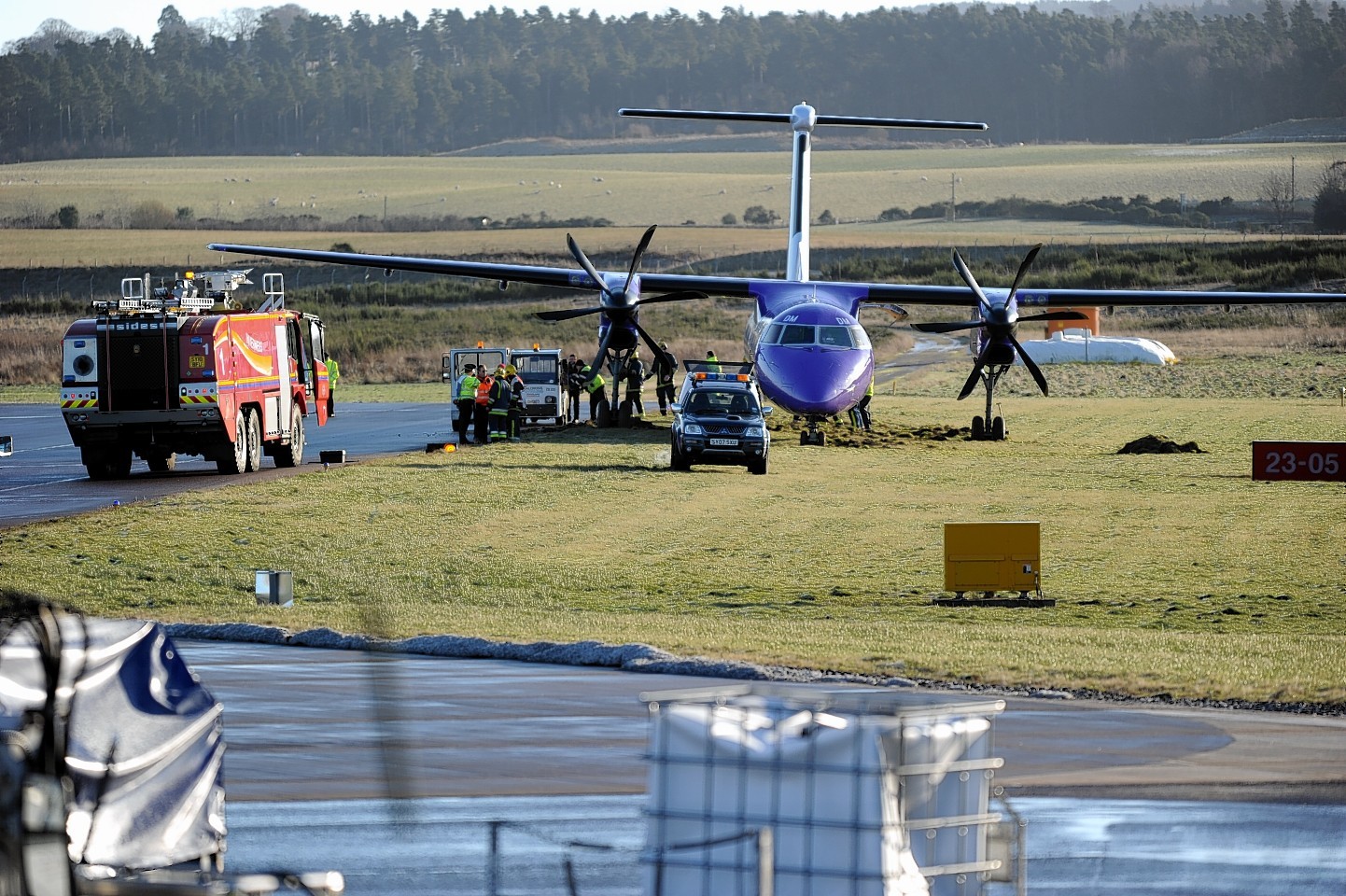A plane which skidded off a north runway earlier this year was going too fast when the commander lost control, air accident investigators have found.
The Flybe jet was carrying 47 passengers and four crew when it suffered “an uncontrollable skid” and went off the taxiway and onto grass at Inverness Airport on January 19 this year.
In a report into the incident published this morning, the Air Accidents Investigation Branch (AAIB) conclude that the aircraft’s speed on the ground was considered to have been a “major factor” in the loss of control.
Witnesses to the incident also noted that the plane was travelling “unusually fast”.
The purple-liveried Flybe plane came to with all three wheels partly sunken into soft grass at the south-west end of the runway.
The turboprop Dash plane had been ferrying passengers from Manchester to the Highlands, but no-one on board was injured in the incident.
Some passengers reported hearing “squealing” from the tyres as the plane attempted to take the corner from the runway onto the taxiway.
An airport operations assistant told the AAIB that he had watched the plane land – and had noticed that something was wrong as it continued along the runway.
The AAIB report said: “He (the airport assistant) stated that he would normally have turned away and returned to his marshalling position, but said that he continued to watch because he felt that the aircraft was travelling unusually fast as it reached the end of the runway.
“He observed it turning right and heard the tyres squeal as it did so, raising the alarm when he realised it had gone onto the grass.”
The 58-year-old pilot reported that he had felt the paved surface was very wet with de-icing fluid, and thought there were still some icy patches. The de-icing fluid had made the white lines slippery said the pilot.
However, he conceded to the AAIB that he had been travelling at “slightly higher than normal taxi speed” but had been eager to vacate the runway.
A report prepared by the airport stated that the runway had been de-iced twice on the morning of the incident and that they judged the white lines not to be slippy.
Tyre marks were also found on the surface where the plane had turned which the AAIB suggested meant that there was “adequate friction”.
A spokesman for Inverness Airport said: “We made it clear to the AAIB that the runway that been thoroughly de-iced and that there were no icy patches, as evidenced by the fact that several aircraft had landed earlier without incident.
“The report supports this view and shows that aircraft speed was the determining factor.”
Flybe have been contacted for comment.
